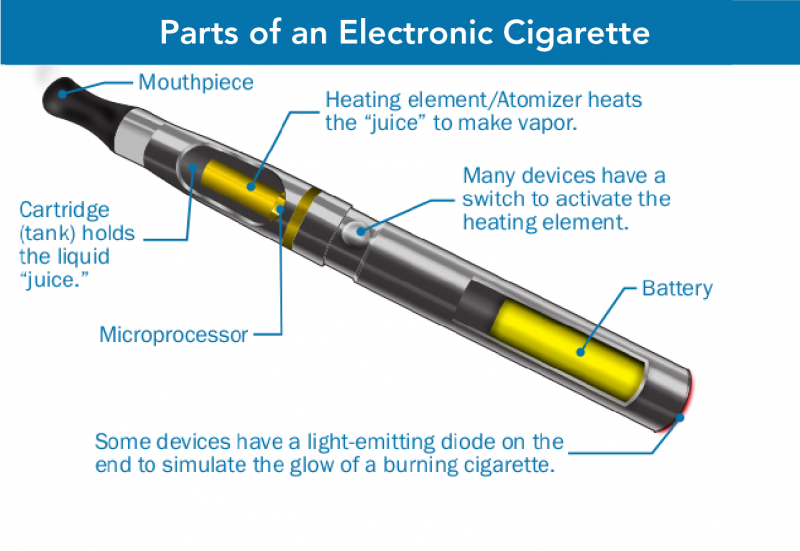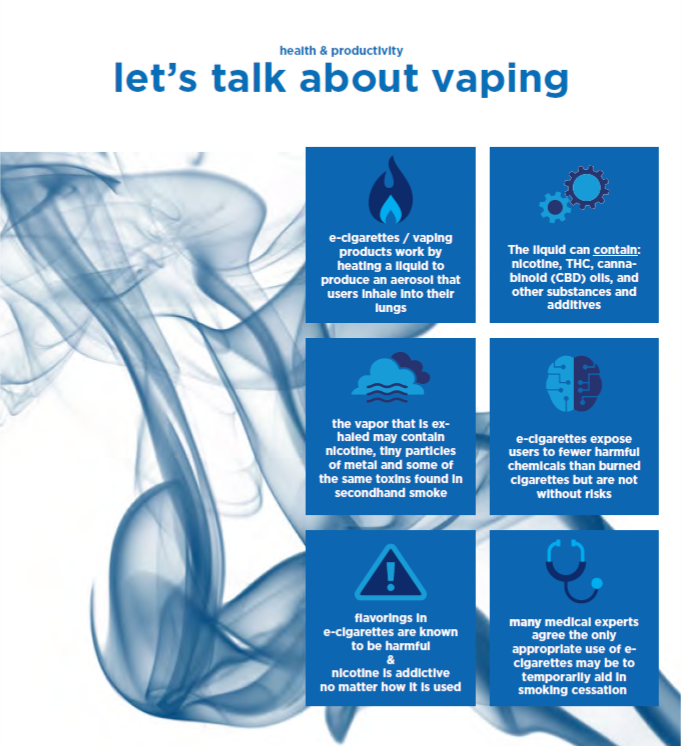There's no denying that smoking is bad for your health. But what about vaping products such as electronic cigarettes? Unlike traditional cigarettes, vaping products don't contain any tobacco. They don't burn anything. They're marketed as a safer, healthier alternative to traditional cigarettes. But there isn’t much evidence available to back up this claim. In fact, there are serious health concerns related to vaping.
How does vaping work?
Vaping products come in different shapes. Some look like traditional cigarettes. Others look like pens. Some even look like USB sticks. Vaping products contain a cartridge which the user fills with a solution. This solution is sometimes called “vape juice” or “e-liquid.” The solution is made up of propylene glycol (C3H8O2) or glycerin (C3H8O3), nicotine (C10H14N2), and flavouring agents. When the person inhales, this activates a heating element. The heat turns the liquid solution into a vapour. The heat also sets off chemical reactions in the solution.
Can you get addicted to vaping?
Vaping products may not contain tobacco. But most “vape juices” do still contain nicotine. That’s the addictive substance in cigarettes. A person can still get addicted to nicotine from vaping. That addiction can last a lifetime.
What are the other health concerns with vaping?
Many people think that vaping is healthier than smoking cigarettes. But scientists don’t actually know how safe e-cigarettes are. Vapourizers use solvents, such as propylene glycol, to dissolve the nicotine and flavouring. These solvents can also irritate the eyes, nose, throat, and lungs. They also break down and produce compounds containing a carbonyl group (C=O). Some carbonyl compounds (X-C=O) are known to cause cancer. For instance, when propylene glycol is heated and vapourized, it can produce the carcinogen propylene oxide (CH3CHCH2O).
But do the substances in e-cigarette vapour get deposited in your body? Or do they just get exhaled along with the vapour? The answer lies in particle size. When you smoke an e-cigarette, you inhale an aerosol of ultra-fine particles. These very small nanoparticles are linked to many health problems. For example, they are linked to:
- lung inflammation
- asthma
- stroke
- heart disease
- diabetes
Also, bacteria exposed to nicotine-rich vapours form a biofilm coating. A biofilm is made up of a thick, glue-like substance. Microorganisms secrete biofilms to help themselves attach to a surface and to one another. These biofilm coatings can make bacteria more resistant to antibiotics. That means someone who vapes might have a harder time getting treated for illnesses like pneumonia.
Smoking and vaping have one other thing in common. Both can affect bystanders. Cigarettes produce second-hand smoke. Similarly, vapers exhale aerosol. This “passive vaping” could be a significant problem. Some places ban cigarette smoking but still allow vaping.
It’s recognizes that vaping can help smokers who are trying to quit however other associated risks should be taken to consideration. Remember there is still little information about the long-term effects of vaping.
Sound advice, because as they say: where there's smoke, there's fire.




Source: https://letstalkscience.ca/educational-resources/stem-in-context/vaping-safer-smoking
